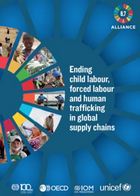Challenges & of zero hunger – Gender
Извор: WUNRN – 17.10.2019
 Credit: Mallika Aryal/IPS
Credit: Mallika Aryal/IPS
UNITED NATIONS, Oct 4 2019 (IPS)- Enough food is produced today to feed everyone on the planet, but hunger is on the rise in some parts of the world, and some 821 million people are considered to be “chronically undernourished”. What steps are being taken to ensure that everyone, worldwide, receives sufficient food?
Thanks to rapid economic growth, and increased agricultural productivity over the last two decades, the number of people in the world who aren’t getting enough to eat has dropped by almost a half, with regions such as Central and East Asia, Latin America and the Caribbean making great strides in eradicating extreme hunger. However, that’s against a background of the global population rising by nearly two billion.
And now recent trends suggest that the hunger problem persists: particularly in Africa and South America, where there are new indications that undernourishment and severe food insecurity are on the rise.
In Sub-Saharan Africa the number of undernourished people has increased, from some 195 million in 2014, to 237 million in 2017. Poor nutrition causes nearly half of deaths in children under five in the region, some 3.1 million children per year.
Five Solutions to Zero Hunger
Whilst there is no silver bullet to solving hunger, the World Food Programme has outlined a vision that breaks the issue down into five steps.
– More protection for the most vulnerable. Expanding social protection for the poorest would raise the purchasing power of the poorest two billion, kickstarting local economies
– Improve infrastructure. Ensure consumers and suppliers can more easily buy and sell, by building better roads, storage facilities and extending electrification
– Reduce food waste. Around one third of the food produced each year is loss or wasted, costing the global economy some $1 trillion per year
– Grow a wider variety of crops. Around 60 per cent of all calories consumed come from just four crops: rice, wheat corn and soy. Ensuring food access and availability in the face of climate change will require the production of a wider range of foods.
– Focus on child nutrition. Good health and nutrition in a child’s first 1,000 days is essential to prevent stunting and promote healthy development.
Achieving the 2030 goal of Zero Hunger, in other words ensuring that nobody goes hungry wherever they are in the world, remains a major challenge.
According to the World Food Programme (WFP), the causes of increased hunger include environmental degradation and drought – both of which are impacted by climate change – as well as conflict.
The lack of biodiversity in agriculture is also a cause for concern, and is held responsible for homogenous diets which limit access to food, leading to persistent malnutrition and poverty: current agricultural production revolves around just 12 crops, and around 60 per cent of all calories consumed come from just four crops: rice, wheat corn and soy, despite the wealth of potential foodstuffs around the world.
The good news is that, around the world, innovation and technology are being used to improve a wide range of food production challenges.



